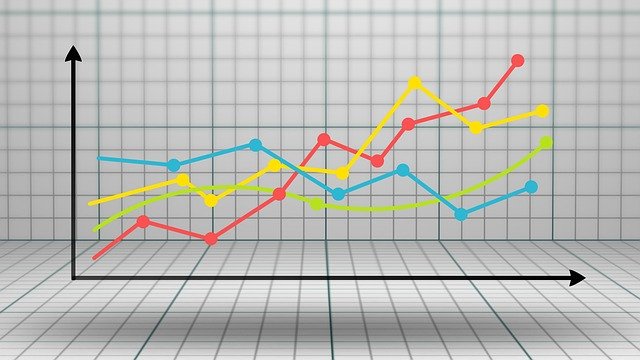
Image by Mediamodifier from Pixabay
Social media monitoring can supplement – or even replace – traditional market research. Traditional market research – surveys, focus groups and in-depth interviews — has disadvantages. It reflects feelings of a small group of people at one point in time. The information gathered is time-constrained, selective and skewed.
People may not tell researchers what they really believe. They may not even know what they think at the time. Researchers may ask the wrong questions, speak to the wrong groups or interpret what they say incorrectly.
“With so much of our personal details being made accessible online through social media, it’s only natural that these networks become a go-to resource when it comes to market research and developing buyer personas,” says Ramona Sukhraj, head of editorial content at IMPACT.
Advantages of Research through Social Media Listening
Social media listening, also called social media monitoring, offers a solution. Market research attained through social media monitoring has several advantages:
More current. Companies observe how feelings toward their brands and more general consumer preferences change over time.
More accurate. Because information gathered is unprompted, it is more likely to reveal customers’ true feelings.
Fast. Social media analytics can produce data in hours or days, as opposed to weeks or months for conventional research methods.
More affordable. Social media analytics can produce reports at a fraction of the cost of conventional research methods.
Research Uses of Social Media Monitoring
Product satisfaction. Companies can determine deficiencies and strengths of products or service by monitoring social media conversations. That can help guide future product enhancements and produce new products that would not have otherwise been considered.
Audience segmentation. Social media monitoring and measurement tools can filter and analyze data based on demographics, geography and sentiment to provide detailed analysis and insights.
Competitive intelligence. Companies can also gain a windfall of competitive intelligence. Competitive intelligence, or collecting publicly available information about competitors, provides valuable information about competitors’ PR and marketing strategies, product development as well as sales opportunities. By monitoring conversations surrounding competitors’ products, businesses can avoid similar issues that prompt complaints and quickly emulate features that elicit praise.
Advice for Social Media Listening for Market Research
Experts offer these recommendations:
Address a business challenge. Base your social listening approach on the business challenge your organization is trying to solve and what you hope to gain from social listening. Instead of starting social media market research campaign saying “let’s see what we find” Instead, seek to test a theory or assumption.
Set clear goals. Establish clear goals about what you seek to research, such as consumer sentiment toward your brand or products, customer behavior or competitive intelligence. Define your customer demographics and their customers’ preferred platforms. Social media provides an abundance of data. Don’t try to measure everything.
Select keywords carefully. While generic keywords cast a wide net and help collect a sufficient amount of data, you want to gather as much detailed information as possible. Boolean search terms, such as NOT, excludes irrelevant data.
Don’t neglect qualitative data. Researchers typically focus on the overall numbers of positive and negative comments and other numbers. Analyzing numbers isn’t enough. Reading content of social media posts is critical to tease out consumer insights and suggestions. A single comment can reveal an insight that prompts a new product or key product enhancement. Uncovering such insights requires trained human analysts.
Break down silos. Don’t treat this as just a data, IT or marketing issue. Bring together the right skills from inside and outside your organization to address the business challenge at hand, states Anand Rao, innovation lead for PwC’s U.S. data and analytics practice. Make sure that relevant data feeds back to the relevant corporate functions to inform business decisions in a timely way. Cross-functional social media teams can break down corporate silos and help the entire organization reap the benefits of social media monitoring and measurement.
Clean the data. Data can be irrelevant, misleading or plain wrong for a variety of reasons and lead to embarrassingly useless findings. To ensure clean data, audit the data, eliminate duplicates, use standard terminology and, most of all, seek an established media and monitoring service.
Choose the right tools. Learn how to research social media analytics vendors to find the most appropriate service for your needs. Many social analytics tools provide superficial data. Because social media technology changes rapidly, select a tool that is flexible and can seamlessly integrate new advancements. Ideally, you’ll be able to customize the tool to meet your specific needs and objectives. The best social media analytics services can combine automated sentiment analysis with human review and can customize their services to your needs.
Make the benefits last. Don’t just set up a one-off analytics project or tool. Make sure the right conversations flow to the right stakeholders. Make social listening part of normal data gathering practices so that insights gained continue to help you achieve business objectives.
Bottom Line: Social media monitoring and measurement can produce market research that is more accurate than traditional research methods – and faster and more cheaply. These recommendations can help companies apply social listening to research their markets and products.
Schedule a Free Online Demo of the Glean.info Media Monitoring & Measurement Dashboard.
This article was first published on July 26, 2017, and updated on July 13, 2020.
William J. Comcowich founded and served as CEO of CyberAlert LLC, the predecessor of Glean.info. He is currently serving as Interim CEO and member of the Board of Directors. Glean.info provides customized media monitoring, media measurement and analytics solutions across all types of traditional and social media.




